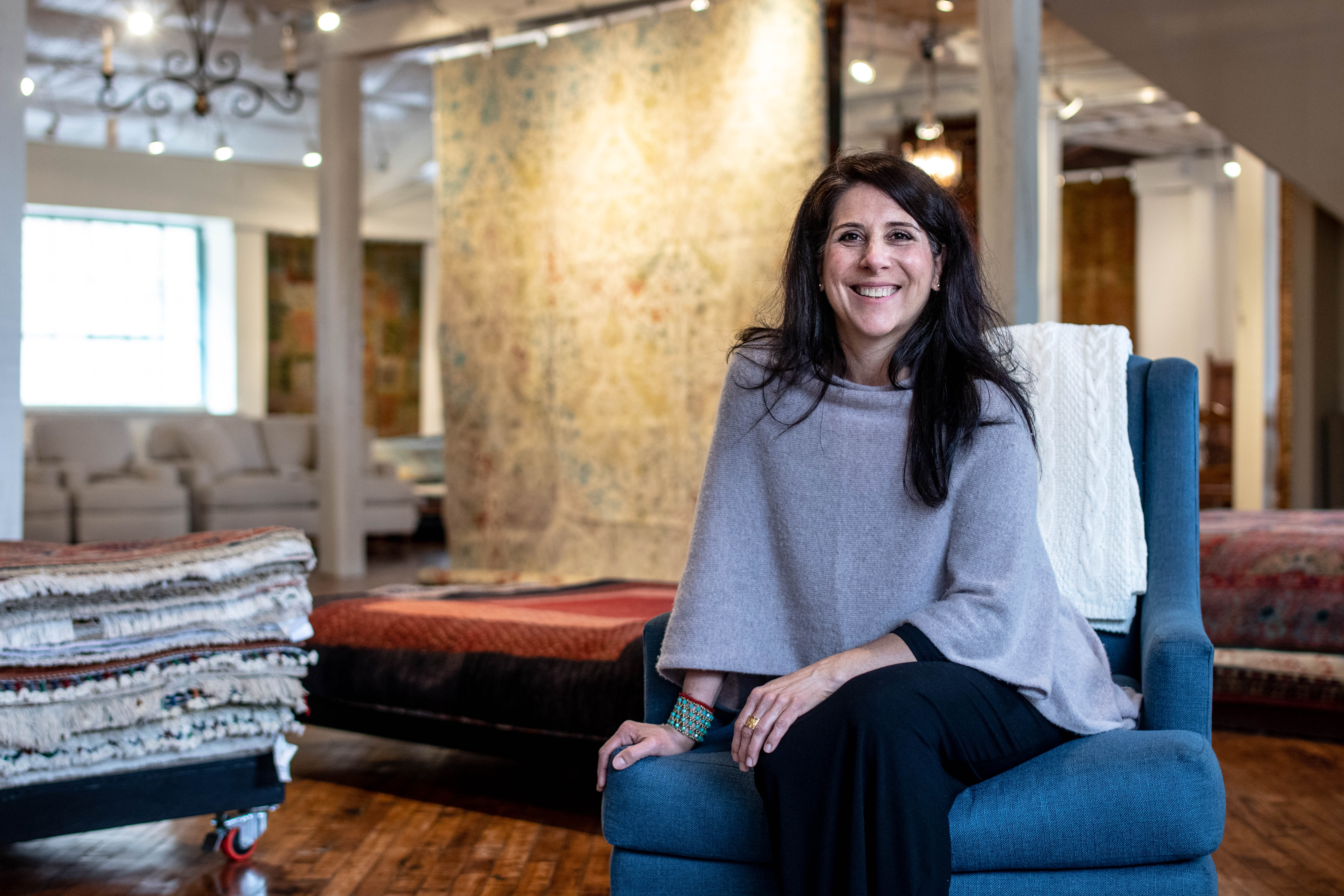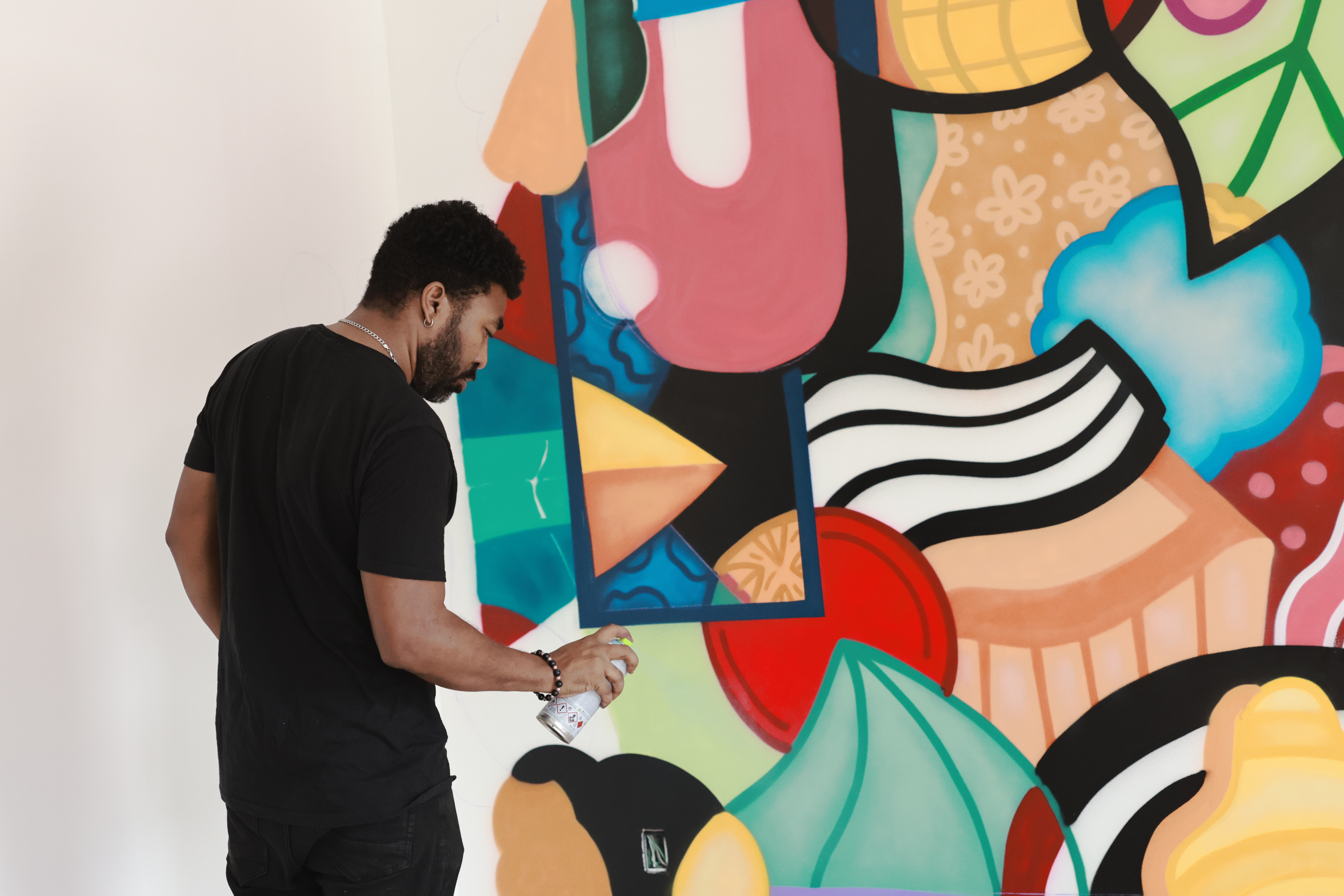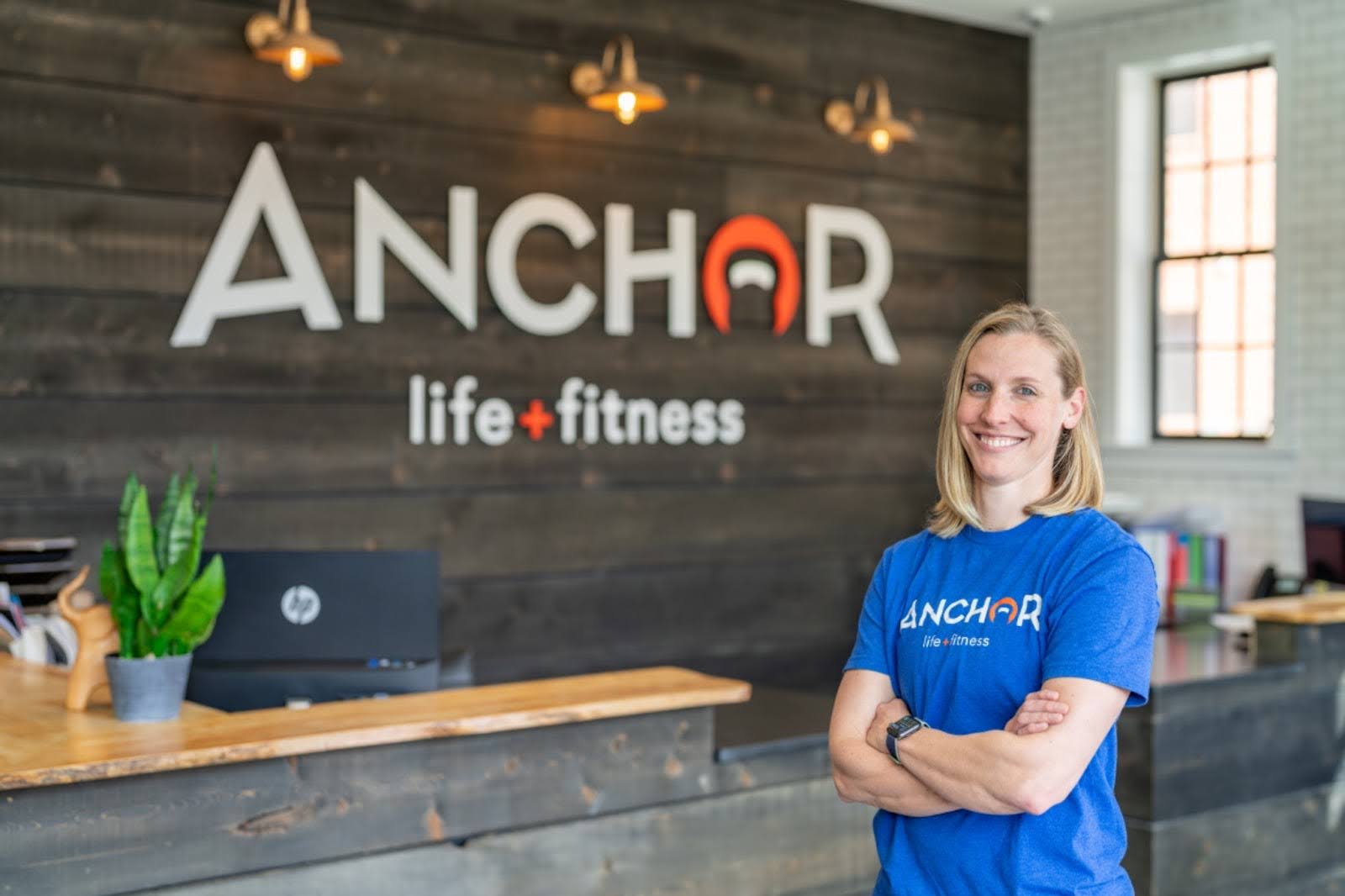The beautifully textured tapestry of Holly Peters’ story interweaves community, art, world history, anthropology, sociology, and family. These strands all come together in her gallery, which offers an immersive experience in the ancient and enduring art of rug making.
A rug is your way of making a personal statement about your house and who you are.
—HOLLY PETERS
A rug is an investment, and buying one requires engaging in a very hands-on decision-making process. “I look at rugs the way I look at art,” Peters says. “It’s a big category, and you have to look at a lot of rugs and edit with your own eye what you like—and especially what you don’t like.” A visit to her spacious, light-filled gallery is the perfect place to start. It’s a trip around the world, to look at rugs that reflect the culture and traditions of far-flung places; it’s also a trip back in time, to see antique rugs from different places and periods of rug making. Every rug has a story. A rug, Peters says, “is a big visual part of your home, and a big part of your budget, and it’s your way of making a personal statement about your house and who you are.”
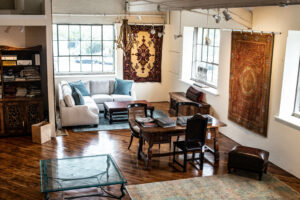
Holly Peters Oriental Rugs & Home gallery. “It has the right vibe,” Peters says.
Peters and her son have lived in the Borough for 15 years. “Kennett Square is a good place to call home,” she says, “which is also a compelling reason to set up shop here.” She found the building on South Broad and moved her business from Chadds Ford 11 years ago. “This building is easy to make beautiful,” she says of the former Ford Motor dealership dating back to the 1920’s that houses Kennett Brewing Company and Carol Lesher’s loft gallery in addition to Peters’ gallery and GrooveKSQ. “It has the right vibe.”
Watching a Renaissance in Rug Making from the Catbird Seat
The history of rug making is a fascinating sociological and anthropological study, and Peters’ own story is woven into that larger narrative. As the effects of the Industrial Revolution rippled into the twentieth century, she explains, very few rug makers continued to use time-honored methods, natural vegetable dyes, or handspun wool. By World War II, virtually all rugs were mass produced and Peters describes the decades between 1940 and 1980 as the dark ages in the industry. “On one end, rugs were being cranked out for big department stores, with their standardization lacking originality. On the other side of the business were specialists who brokered in antique and tribal rugs.”

Holly Peters Oriental Rugs & Home gallery. “It has the right vibe,” Peters says.
After studying fashion design, historical costumes, and textiles at Drexel, Peters says she “backed into the rug business.” She began working with a small rug import company called Woven Legends. Her boss located a small project in Turkey where women were rediscovering the old dye recipes and traditional methods, and an idea was born. He established a modern-day cottage industry of sorts, enabling women weavers to create great designs using vegetal-dyed high-quality handspun wool. By bringing their rugs to a market that was eager to buy them, he helped to revive the atmosphere of the nineteenth-century ateliers and co-ops, where quality was paramount and weavers had great autonomy to make decisions.
“The fusion of cultures made these rugs great,” Peters says. “It was an amazing anthropological experience to watch these women in remote provinces of Eastern Turkey being empowered. In the 1980s and 1990s, they were way ahead of green thinking and concepts of fair trade. Their stories, and their rugs, were incredible.” Woven Legends took off and, she says, “In my twenties I sat in the catbird seat in the rug industry, working for the hottest company and watching this renaissance in rug making.” Other importers soon took notice, and an entire generation of interesting carpet makers followed. Peters credits the existence of a gallery like hers to the sea change that Woven Legends brought about.
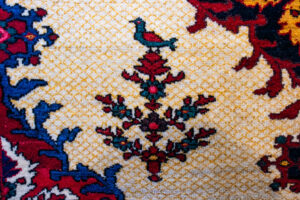
Detail of an antique Bakhtiari Persian rug, ca. 1900.
Today, she says, trends in rugs change as quickly as those in fashion. “I’m pretty traditional still,” she says, with both rugs and colors that will stand the test of time. She predicts that traditional rugs “will come back with a vengeance. People need more than blocks of color.” More people today are mixing contemporary furniture with traditional rugs, for example. Over the past decade, Peters watched as the austerity of the economic downturn translated into a gloomy, neutral aesthetic in interior design, and then she saw that shift as people felt the need to bring color into their lives again. The pendulum is swinging back the other way now. “This generation that’s grown up in the age of technology craves tactile experiences,” she says. “They live in simple modern spaces, and some rooting in tradition will be increasingly important to them.”
This generation that’s grown up in the age of technology craves tactile experiences.
—HOLLY PETERS
The social history of rugs continues to be part of our everyday lives. “Every time you take a wall down,” Peters says, “you lose an opportunity for a piece of furniture. The formal living room doesn’t exist as such anymore, and TV and china cabinets and buffets are relics of the past.” Not so with rugs. “A rug is a fast way to put something authentic in a space, to create or imply a space within a larger space.” She advises people to buy the best product within their means. “I’m not a rug snob,” she says. “If someone sees a rug they like at a flea market and it holds their interest, it’s far better buying something that’s already out there than clogging up the pipeline with tufted, throwaway rugs made with chemical dyes and rubber.” Although it’s an art on the brink of extinction, Peters offers a full range of rug repair, restoration, and cleaning services.
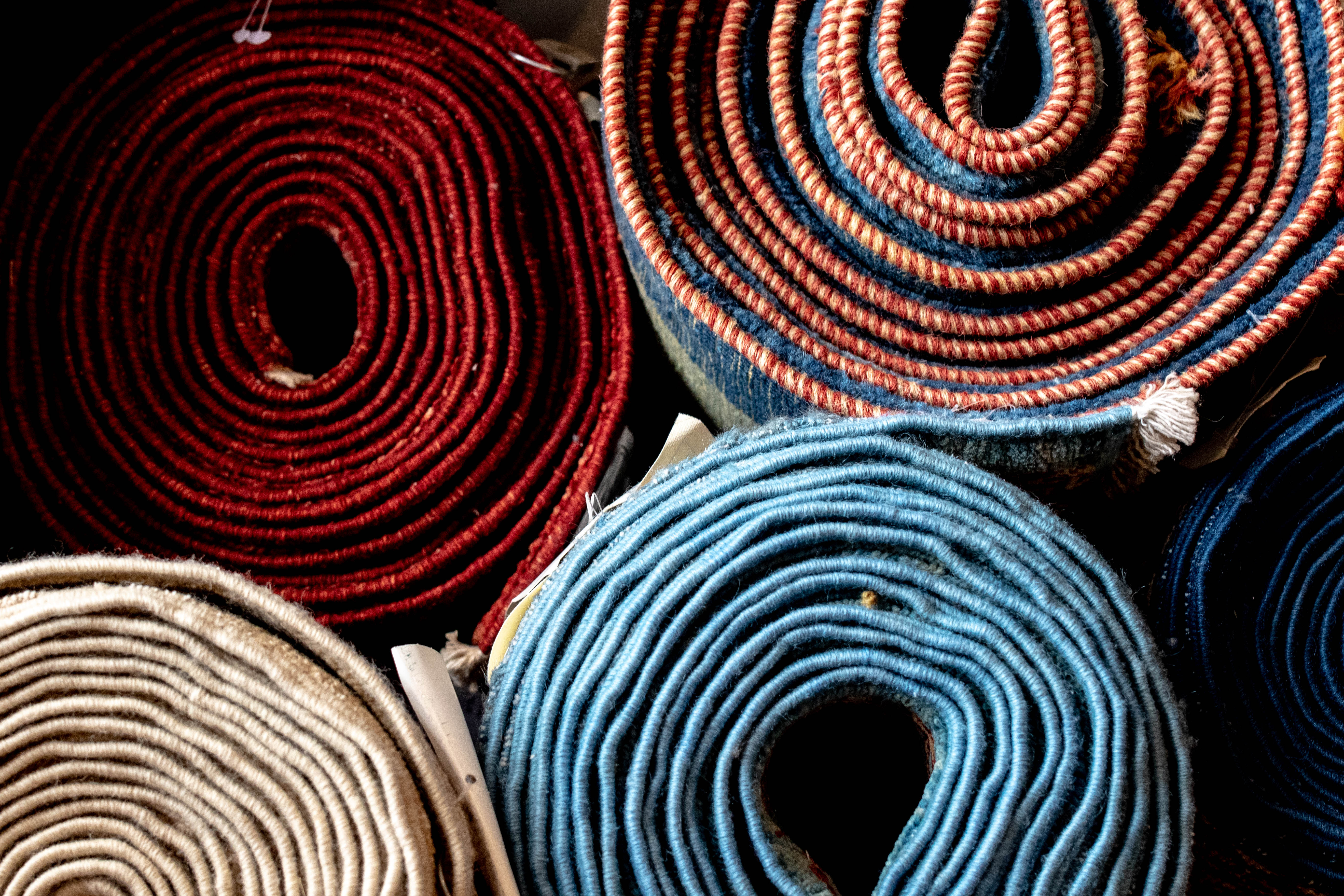
Holly Peters Oriental rugs.
Giving Back to Her Adopted Hometown
Peters has also found her spacious gallery to be a great place to host community events, including the annual sell-out Taste of Kennett to benefit After the Bell. She learned about After the Bell, the phenomenal after-school program based at Kennett Middle School, when her son was in sixth grade. She was amazed that this program, which provides a wide variety of great activities for middle-school students, is entirely privately funded and completely free—including busing to off-site locations and home again. “It gives kids an opportunity to try things and also gives them a leg up socially,” she says. The aim of the Taste of Kennett event is to raise funds but also to create more awareness of the program and its value in the community. “You can’t underestimate the ripple effect of keeping middle schoolers off the streets, happy, and engaged,” Peters says.
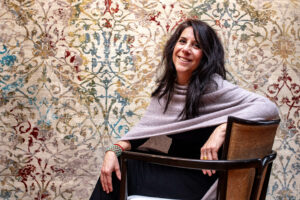
Holly Peters of Holly Peters Oriental Rugs & Home.
“I’m more of a city person in terms of what I like to do,” Peters says, “but I love Kennett Square’s mix of cultures and people.” She also finds the great number of women business owners here, including the three in her own building, energizing. “It speaks to something about the town—and also about entrepreneurship,” she says. She’d love to see the business community more accurately reflect the demographic with, for example, more Latino-owned businesses on State Street. “There are lots of opportunities in this thriving community,” she says. “Kennett Square has a grass-roots soul about it, and it’s growing and getting better all the time.”
